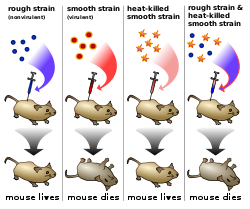History of genetic engineering
The history of genetic engineering started around 12,000 BC. At the time, humans tried to domesticate animals.
The first artificial genetic engineering occurred in 1972. Two scientists named Herbert Norman Cohen transferred DNA then. In 1983, the first tobacco plant was created using genetic engineering. A gene that resisted antibiotics was introduced to the pl ant.
Agriculture
Officially, genetic engineering is the direct manipulation of the genome with techniques developed in the 1970s. Without technology, genetic engineering has occurred in ancient times. It was through domestication and artificial selection that plants and animals were engineered. It is believed that the dog is the first domesticated animal, most likely from wolves.
Research
Development of genetic engineering allows scientists to study diseases.
History Of Genetic Engineering Media
DNA studies suggested that the dog most likely arose from a common ancestor with the grey wolf.
Griffith's experiment discovering a "transforming principle" in heat-killed virulent smooth pneumococcus that enables the transformation of rough non-virulent rough pneumococcus. I am declaring this to be CC0. Although you are not legally required to do so, I would appreciate if you credit me (Madeleine Price Ball) when using my work. --Madeleine (talk) 02:18, 23 January 2013 (UTC)
The bacterium Agrobacterium tumefaciens inserts T-DNA into infected plant cells, which is then incorporated into the plants genome.
In 1974 Rudolf Jaenisch created the first GM animal.
A laboratory mouse in which a gene affecting hair growth has been knocked out (left), is shown next to a normal lab mouse.






